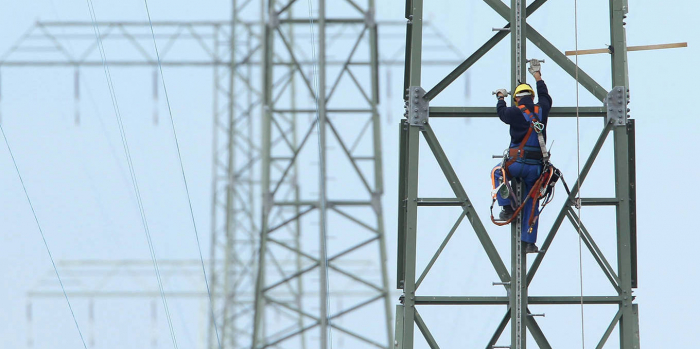A credible low-cost path to decarbonize energy systems and transport, which together account for 60% of emissions, now exists. Unfortunately, political obstacles to the rapid adoption of these clean-energy solutions have emerged, owing to NIMBYism in advanced economies and tensions between the West and China.
According to the International Energy Agency, tripling renewable capacity by 2030, a goal set at last year’s United Nations Climate Change Conference in Dubai, is now feasible, owing to dramatic cost reductions in clean-energy technologies. Specifically, the falling price of solar panels and batteries has rapidly improved the economics of climate mitigation.
Adam Posen worries that markets and some Federal Reserve officials are misassessing the effects of policy-rate hikes.
Over the last 20 years, solar-panel prices have fallen whenever global capacity doubled, and the continued expansion of solar capacity, especially in China, stands to create further gains. By comparison, other renewable-energy technologies, such as wind turbines, do not benefit from the same advantages of scale because their many moving parts are more liable to break. As a result, the costs of wind power have decreased substantially but not to the same degree. It seems likely that ever-cheaper solar energy will be widely adopted as the renewable of choice.
Another important development is the falling cost of batteries. As with solar panels, battery prices in recent decades have declined by roughly 19% for every doubling of production. This trend must continue to produce cheaper electric vehicles (EVs) and to offset the intermittent nature of renewables. The combination of solar energy (which has a predictable daily cycle) and batteries, in particular, comes close to creating the ideal power source that is available when needed.
But the improving economics of renewables, while a positive and necessary development, does not mean that we will win the fight against climate change. Yes, a credible low-cost path to decarbonize energy systems and transport, which together account for 60% of emissions, now exists. Unfortunately, political obstacles to the rapid adoption of these clean-energy solutions have been emerging, both globally and locally.
In advanced economies, the biggest barriers to renewables arise at the local level: NIMBY (“not in my backyard”) activism often prevents new wind-power installations and grid upgrades, which are crucial for integrating and transporting large amounts of renewable electricity. For example, Germany has so far failed to create a link between its offshore wind farms in the North Sea and the industrial South. The local opposition to new power lines was so vociferous that the connection, called SuedLink, is now being made with underground cables that increase the cost by a factor of five. Recognizing the problem of NIMBYism, the European Commission recently directed member states to accelerate permitting for renewable-energy projects.
But the greatest obstacle to decarbonization is the rising tension between the West and China. A large, advanced economy like the European Union or the United States, the argument goes, cannot allow a geopolitical rival to dominate future growth industries. This view has paved the way for green industrial policies on both sides of the Atlantic. But the costs of solar panels and batteries are rapidly declining precisely because they are mature technologies with increasingly commoditized products (which China excels at manufacturing at scale). These are not the industries of the future.
Another argument for the domestic production of renewables is to ensure energy security. But this is also wrong. Any disruption in the supply of solar panels would not interrupt the energy supply because the existing installed capacity would continue to generate electricity (at zero marginal cost).
These tensions have been felt most acutely in the EV sector. The market share of EVs has stagnated at 8% in the US and roughly 15% in the EU, partly because they are more expensive – often by as much as $20,000 – than internal combustion engine (ICE) cars. Subsidy schemes in the US and EU only partially offset the higher cost, whereas in China, EVs are close to price parity with ICE vehicles and their market share was more than 35% in 2023. Welcoming low-cost Chinese EVs could save Western consumers money, but both the US and the EU have imposed high tariffs on them.
In addition to major industrial powers “protecting” themselves against cheap Chinese imports and thus increasing the cost of the green transition, geopolitics has also created obstacles to the implementation of renewables in the developing world.
China, with its Belt and Road Initiative (BRI), should be well placed to support decarbonization efforts in poorer countries. But that has not happened for two reasons. First, India is not taking part in the BRI and fiercely protects its industry, owing to its rivalry with China. This matters, because India is now the world’s third-largest emitter, surpassing the EU in 2023, and also one of the fastest-growing economies. Second, the governments receiving Chinese credits under the BRI often prefer to spend them on prestigious infrastructure projects rather than on humble renewable installations.
Ongoing reductions in the cost of renewable energy are vastly improving the near-term potential to decarbonize large parts of the global economy. But politics is standing in the way of progress.
Daniel Gros is Director of the Institute for European Policy-Making at Bocconi University.
More about:
















































